Top 5 AI Optimization Agencies Helping Brands Rank in ChatGPT & AI Search
Simran Kataria

CRO tools are essential for understanding what your visitors are doing, why they’re not converting, and how you can fix it. Think of them as a digital microscope. They let you zoom into the user experience to spot friction points, test improvements, and track the impact—without needing to overhaul your entire website.
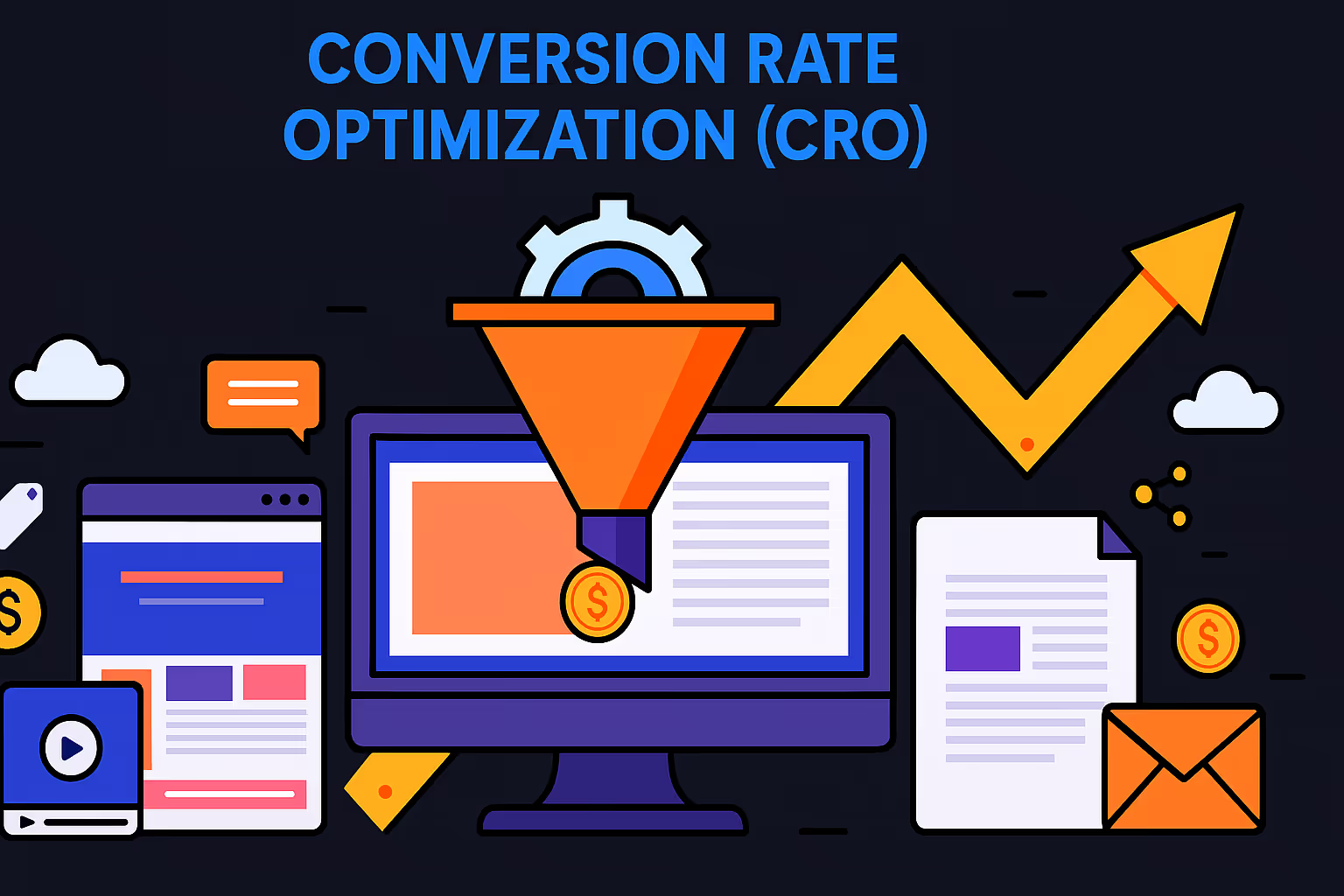
Here’s the thing: even a small bump in your conversion rate can lead to significant revenue gains. For example, if you improve your conversion rate from 2% to 4% on a site that gets 100,000 visitors a month, that’s twice the leads without spending a single extra dollar on traffic.
And the impact is even more substantial in B2B, where lead quality and sales cycle length can make or break revenue goals. According to a report by Econsultancy and RedEye, only 28% of businesses are satisfied with their conversion rates—meaning the rest are leaving money on the table.
CRO tools help bridge that gap. They analyze visitor behavior, uncover drop-off points, and let you test what works best—whether it’s a new CTA button, a more focused landing page, or a personalized headline tailored to your audience’s needs.
In 2025, the right CRO stack is no longer a nice-to-have. It’s a core component of your growth strategy. And as we’ll explore throughout this article, the best CRO tools for B2B companies aren’t just for tech teams—they’re built for marketers, sales leaders, UX designers, and growth strategists alike.
Conversion Rate Optimization (CRO) is the strategic process of increasing the percentage of website visitors who take a desired action—be it filling out a form, scheduling a demo, downloading a whitepaper, or signing up for a free trial. For B2B companies, this isn’t just about flashy buttons or clever copy. It’s about refining every step of the buyer journey to drive qualified leads and support revenue growth.
CRO tools provide the data and insights needed to improve each user touchpoint, from headline clarity to form usability. And unlike B2C, where conversions can be impulsive and emotional, B2B CRO is about earning trust, reducing friction, and aligning with buyer intent over a longer sales cycle.
B2B websites often serve multiple audiences—from executives and procurement managers to IT stakeholders and end-users—all of whom have different goals and decision criteria. According to Gartner, a typical B2B buying group involves 6 to 10 decision-makers, each armed with four or five pieces of information they've gathered independently. That means your website and funnel need to serve a broader range of intent, content needs, and touchpoints.
That’s where CRO shines.
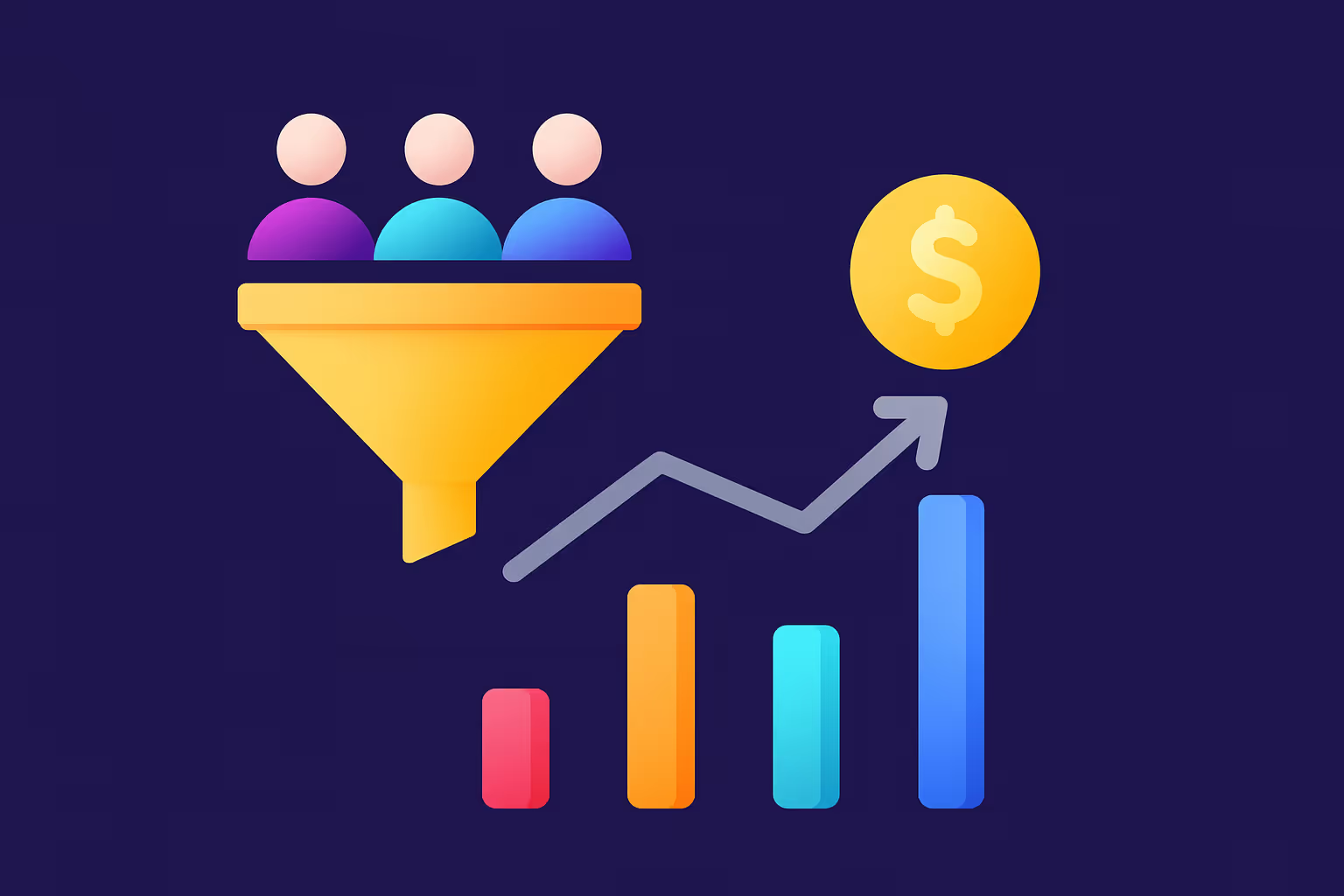
Rather than throwing more money at paid ads or content distribution, CRO focuses on maximizing the impact of the visitors you already have. For example, improving demo request completion rates by just 10% on a high-traffic SaaS product page could mean hundreds of additional qualified leads each month.
A study by Venture Harbour demonstrated this power. By simplifying their homepage, reducing form friction, and showcasing trust elements, they increased conversions by a staggering 200%.
B2B CRO has a unique set of hurdles:
On top of that, the path to conversion isn’t linear. Visitors may come back several times, on different devices, at different stages of awareness. That’s why your CRO strategy—and the tools you use—must go beyond surface-level metrics and dig deep into user behavior and journey segmentation.
Before investing in any CRO tool, the first step is to understand what you're optimizing for. Are you looking to increase demo bookings? Improve whitepaper downloads? Reduce form abandonment? The toolset you choose should directly support those specific goals.
For example, if your primary objective is to boost demo requests, tools like VWO or Unbounce—both of which allow for rapid A/B testing and personalization—are strong candidates. On the other hand, if you want to uncover usability issues or bottlenecks in complex sales pages, platforms like Hotjar or Crazy Egg offer detailed visual behavior tracking.
B2B marketers rarely work in silos. Your CRO tools should seamlessly integrate with your CRM (like Salesforce or HubSpot), CMS (like WordPress or Webflow), analytics platform (like Google Analytics or Mixpanel), and your marketing automation systems.
Seamless integration ensures that data flows across your systems without manual workarounds. More importantly, it allows you to build a centralized view of your customer journey and make better decisions based on unified data.
In B2B, you're often handling sensitive customer data. That makes security a top priority. Look for tools that are GDPR and CCPA compliant, offer Single Sign-On (SSO), and provide regular security audits. This is especially critical if your company deals with regulated industries like healthcare or finance.
Scalability is another key factor. You need tools that grow with your team—offering additional features, user seats, or advanced functionality as your experimentation needs mature.
The best CRO tools support collaboration across departments. A designer should be able to tweak visual layouts. A marketer should be able to launch experiments. And your product or analytics team should have access to performance dashboards.
Platforms like VWO and Optimizely offer built-in workflows that allow multiple users to manage, prioritize, and review CRO experiments with clear role-based permissions. This not only boosts efficiency but ensures alignment across marketing, sales, and product teams.
While free tools like Google Optimize (sunsetted in 2023) offered a decent start, most growing B2B firms will need more advanced platforms. That means budgeting is a consideration. Evaluate pricing based on your monthly traffic volume and the number of experiments you plan to run.
Equally important is onboarding and customer support. Look for tools that provide detailed documentation, live training sessions, or even dedicated success managers if you're running high-stakes experiments.
Choosing the right CRO tools starts with understanding the various categories available and what problems each type is best suited to solve. In the B2B world, where user journeys are complex and involve multiple decision-makers, it’s rarely just one tool that does it all. The most effective CRO strategies combine tools across several categories to optimize every stage of the funnel.
These tools allow marketers to test variations of landing pages, CTAs, forms, headlines, and other elements to determine which version drives better performance. In B2B, even small changes—like tweaking a value proposition or removing a form field—can significantly impact conversion rates.
Popular tools:
These platforms typically include visual editors, statistical significance calculators, and the ability to segment traffic by device, location, or behavior.
These tools offer deep insights into how users interact with your site or product—where they drop off, what actions they take, and which flows generate the most engagement. For B2B SaaS companies in particular, tools like Mixpanel and Heap help teams track feature usage and retention metrics across user cohorts.
Popular tools:
They’re crucial for identifying bottlenecks in onboarding, feature adoption, and key product milestones that contribute to conversion.
These platforms provide a visual representation of user behavior—where they click, how far they scroll, and where their attention goes. Session replays allow you to watch how real users navigate your site, uncovering usability issues that raw numbers might miss.
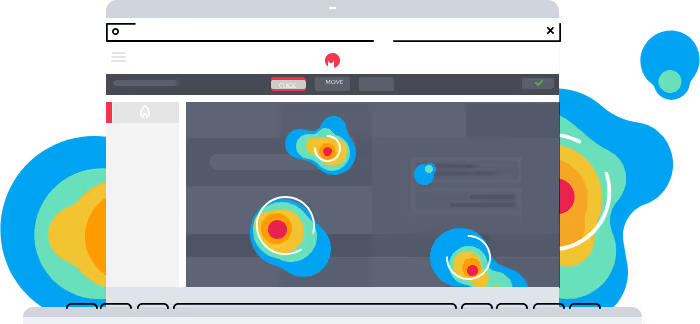
Popular tools:
For B2B companies, these tools are especially useful for optimizing long-form content, demo request pages, and signup flows.
These tools dynamically change content based on the visitor’s behavior, industry, company size, or source channel. In B2B, personalization can be the difference between a visitor bouncing and a stakeholder requesting a demo.
Popular tools:
These platforms help tailor messaging and layout to decision-makers in real time, making your content feel more relevant and engaging.
Lead capture tools help you create high-converting forms and pop-ups, while form analytics tools track where users drop off or hesitate. These insights are critical for streamlining lead generation and increasing form submission rates.
Popular tools:
These are particularly powerful for B2B firms running campaigns that rely on gated content or demo scheduling.
Sometimes, the best way to understand what’s not working is to ask. These tools collect direct feedback from users through surveys, polls, and on-site widgets. B2B buyers tend to be analytical, so feedback can surface objections or gaps you might not have considered.
Popular tools:
Survey tools are also great for post-demo feedback and understanding lead quality after conversion.
Each CRO tool on this list was selected for its proven track record, relevance to B2B use cases, and ability to integrate seamlessly with modern marketing stacks. Whether you're optimizing demo requests, onboarding flows, or lead capture forms, these tools will help you convert more of the traffic you’re already getting.
VWO is a full-stack CRO platform ideal for B2B companies looking to scale their experimentation program. It offers A/B testing, multivariate testing, split URL testing, heatmaps, session recordings, and even AI-powered anomaly detection.
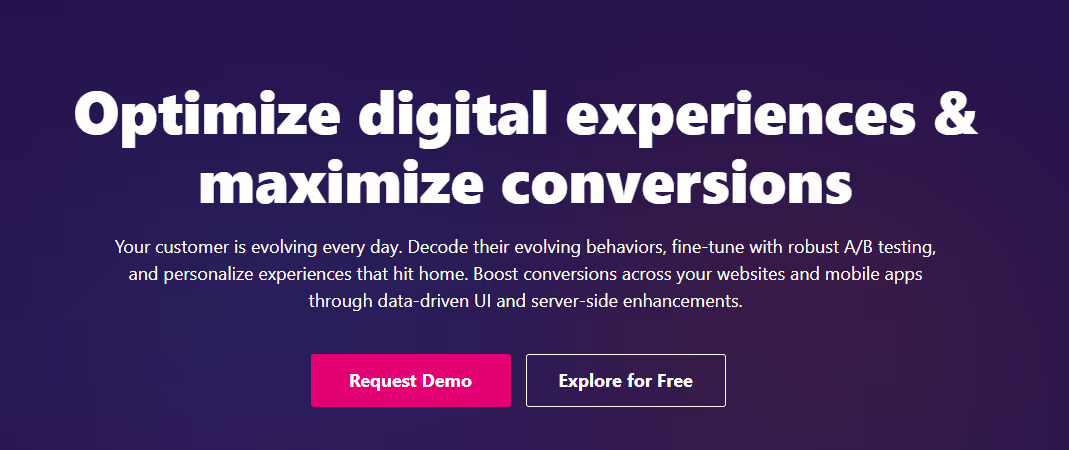
Key features:
VWO is especially valuable for SaaS and enterprise B2B brands managing multiple tests and user segments. Pricing starts at $393/month for 50,000 monthly tracked users.
Optimizely has long been a leader in digital experimentation. It’s designed for development-heavy organizations that want full control over testing, targeting, and content personalization.
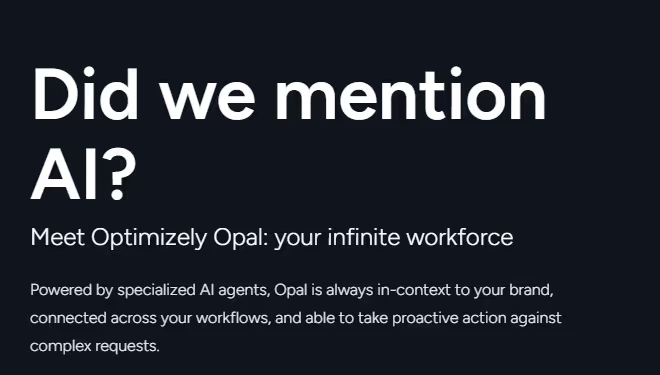
Key features:
It’s particularly powerful for enterprise B2B platforms with complex customer journeys and global audiences. Pricing is custom and tailored to usage.
Hotjar is a popular tool for understanding how users interact with your site visually. It’s easy to implement and provides heatmaps, scroll maps, click maps, and session recordings.
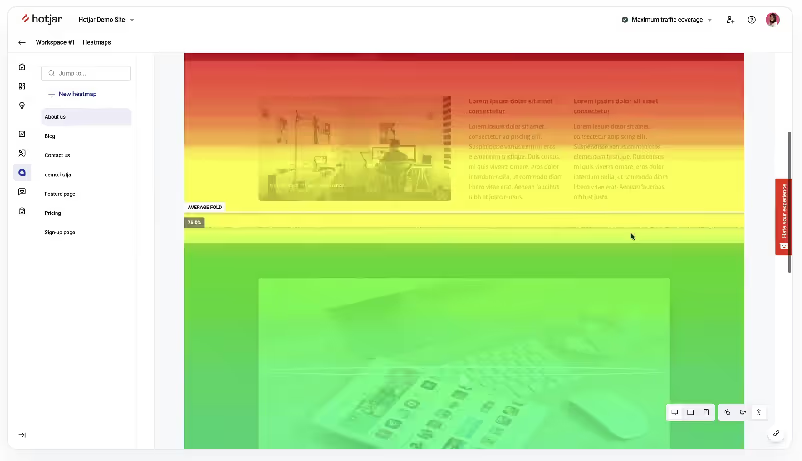
Key features:
For B2B teams with resource constraints, Hotjar offers quick wins in usability and engagement analysis. Plans start at €32/month.
Heap excels in capturing every user interaction automatically, removing the need for manual event tagging. It’s great for B2B SaaS teams looking to optimize product experiences and onboarding funnels.
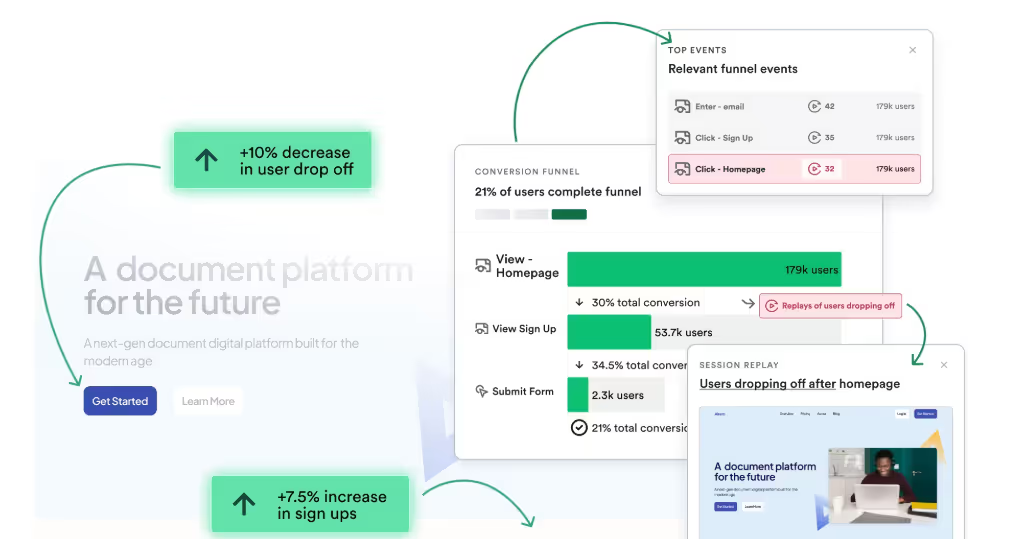
Key features:
Heap’s visual dashboards make it accessible even to non-technical teams. Pricing is available upon request.
Mixpanel is built for product-led B2B teams. It goes beyond standard analytics to help you analyze retention trends, understand drop-off points, and test onboarding improvements.
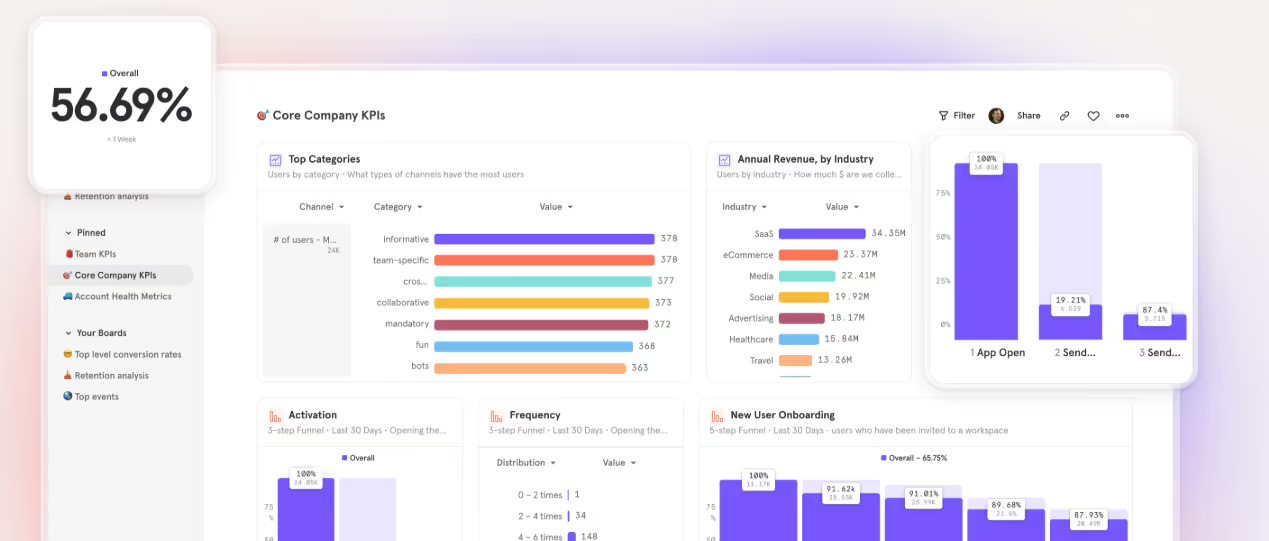
Key features:
Mixpanel is ideal for scaling SaaS platforms. It offers a generous free tier and custom pricing for growth and enterprise plans.
Unbounce is purpose-built for marketers looking to launch, test, and optimize high-converting landing pages without developer support.
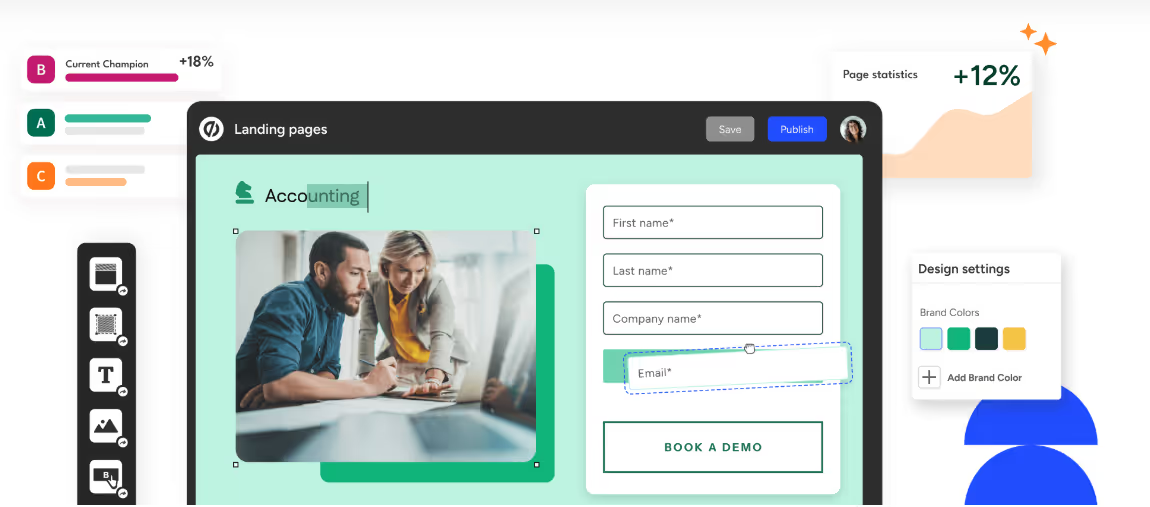
Key features:
It’s especially useful for lead gen-focused B2B teams running multiple campaigns. Plans start at $99/month.
Crazy Egg offers simple but powerful tools to visualize how users interact with key pages. Its scrollmaps and confetti reports are favorites for optimizing content-heavy B2B landing pages.
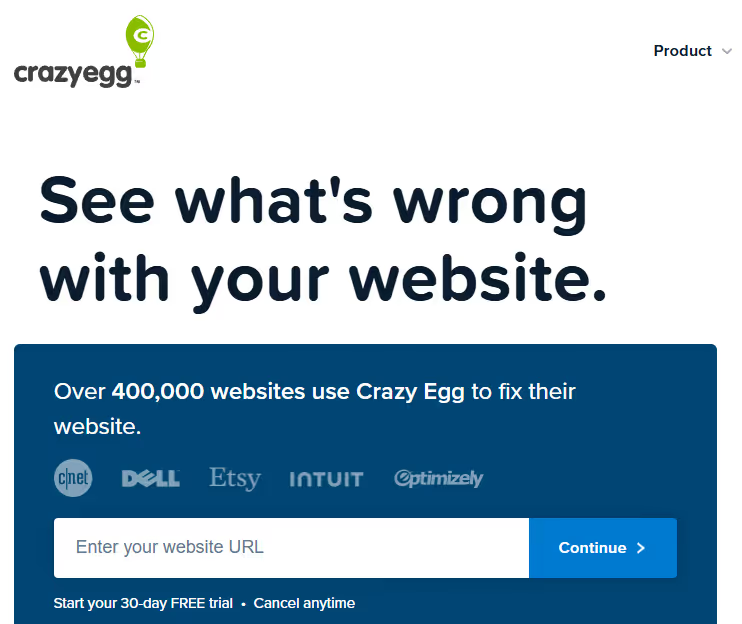
Key features:
Crazy Egg is best for quick visual insights that lead to faster testing. Pricing starts at $29/month.
Mutiny is tailor-made for B2B companies. It helps create personalized experiences for different visitor segments without needing engineering support.
Key features:
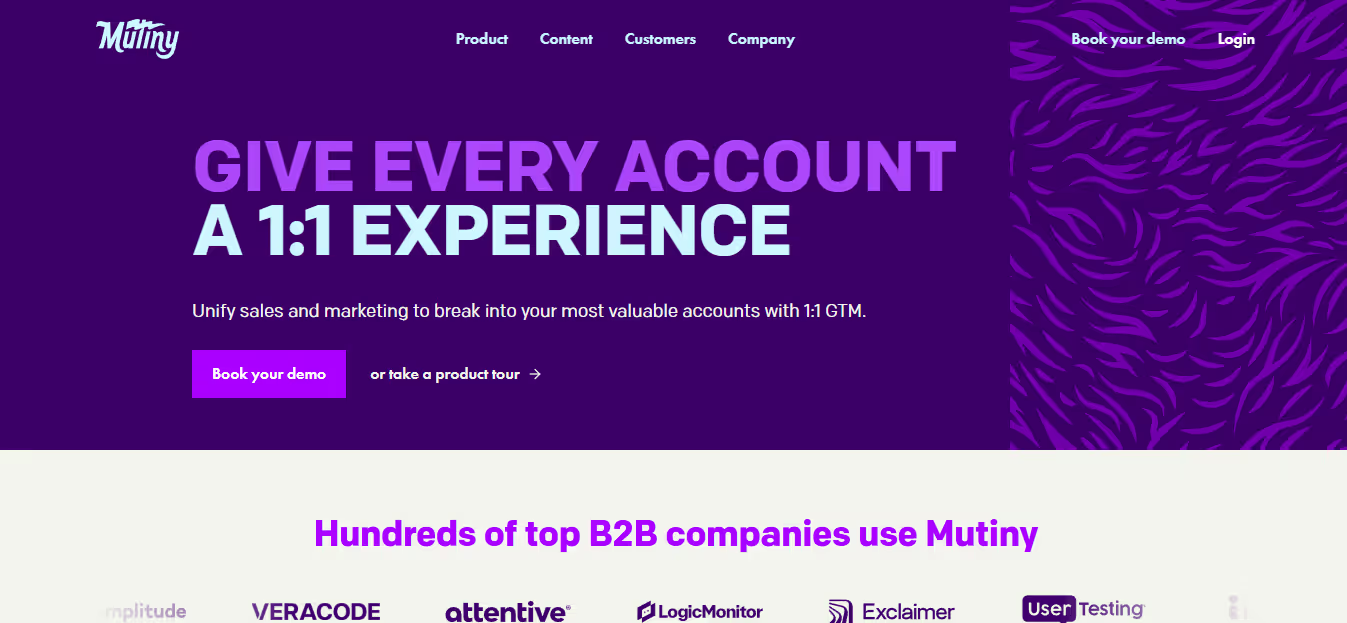
B2B teams use Mutiny to boost demo requests by aligning content to industry, role, or company size. Pricing is custom.
Typeform reimagines forms and surveys with an interactive, human-like experience that feels less like a form and more like a conversation.
Key features:
It’s particularly effective for top-of-funnel lead capture or post-demo feedback in B2B workflows. Plans start at $25/month.
UserTesting enables B2B teams to get real feedback from real users interacting with your site or app—providing valuable context behind behavioral data.
Key features:
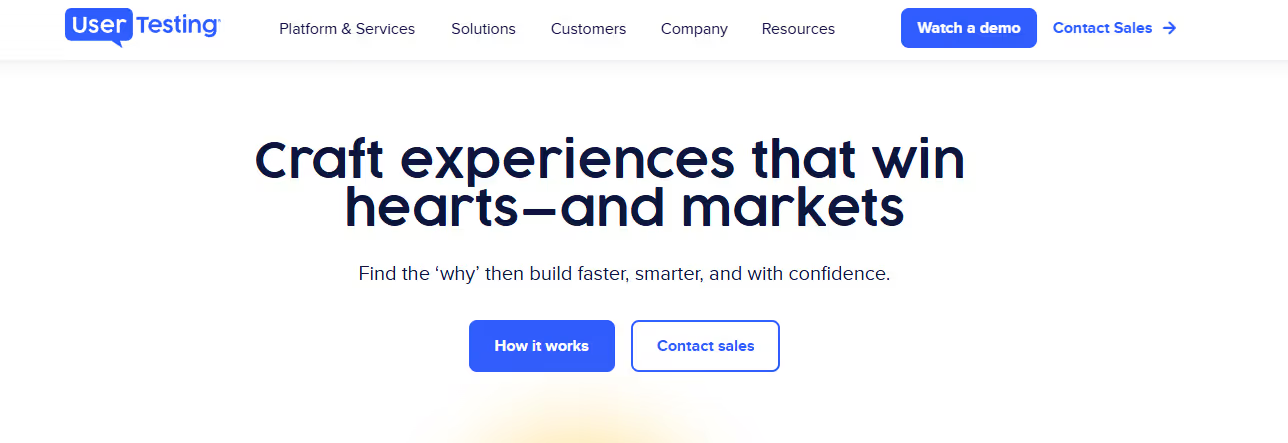
It’s an ideal fit for product teams launching new B2B experiences. Pricing is available upon request.
B2B marketers face a unique set of challenges. Unlike B2C, where purchase decisions can be immediate, B2B conversions often involve multiple stakeholders, longer sales cycles, and more friction along the way. This is where CRO tools can have a transformative impact—especially when used strategically at different stages of the funnel.
Landing pages are often the first meaningful interaction a potential customer has with your brand. Yet many B2B companies still rely heavily on their homepage to convert visitors. A focused, personalized landing page—with the right message for the right audience—is far more effective.
Tools like Unbounce and Mutiny allow teams to build custom landing pages quickly and personalize messaging based on firmographics, job titles, or campaign sources. Pairing this with heatmaps from Crazy Egg or Hotjar can help identify design or copy elements that might be distracting or confusing.
A good example comes from Segment (now part of Twilio), which used personalized landing pages to target different industries and saw a 2x increase in qualified leads as a result.
For SaaS and enterprise tech companies, the demo request or free trial signup form is where most leads are captured. But friction here can be costly. Long forms, unclear CTAs, or vague value propositions can cause high abandonment rates.
CRO tools like VWO and Optimizely let you test different versions of these critical pages—adjusting form length, button copy, and even layout to see what drives better performance. Typeform, with its conversational form builder, is also a great alternative to traditional forms, especially for top-of-funnel lead gen.
Session replay tools like FullStory or Mouseflow are especially helpful here. They allow you to watch how users interact with your forms in real time, revealing micro-moments of confusion or hesitation.
Forms are where many B2B conversion journeys stall. According to a report by HubSpot, the average form abandonment rate is a staggering 74%. That means most visitors who start a form don’t complete it.
Tools like ConvertBox and OptinMonster help reduce abandonment by enabling intelligent form behavior—such as triggering exit-intent popups or showing multi-step forms based on user interaction. With the right CRO stack, you can also test form length, field labels, and autofill options to minimize friction.
B2B sales rarely involve a single decision-maker. That’s why personalization and segmentation are critical. Mutiny stands out here, enabling dynamic page content that adapts based on industry, company size, or even user behavior.
By tailoring your content and calls-to-action to different personas—technical buyers, budget holders, end users—you ensure that everyone in the buying committee finds relevant, persuasive messaging. Combining personalization tools with survey tools like Lyssna or UserTesting can help you refine your narrative based on real feedback from your target audience.
These use cases aren’t hypothetical—they’re grounded in what successful B2B companies are doing today. In the next section, we’ll address common questions teams have when selecting and deploying CRO tools in a B2B environment.
The average B2B website conversion rate typically ranges between 2% and 5%, depending on the industry and offer. However, in 2025, with improved personalization and experimentation capabilities, many high-performing B2B sites are achieving 6% to 10% on targeted landing pages. These figures, cited in a recent WordStream report, highlight the importance of tailoring CRO strategies to your specific business goals and audience.
CRO tool pricing varies widely based on features, traffic volume, and level of support. Entry-level plans for basic heatmapping and form tracking tools can start at around $30/month. Mid-tier solutions like VWO or Mixpanel often range from $300 to $1000/month. Enterprise-grade tools like Optimizely and UserTesting are priced custom, often exceeding $5,000/month depending on usage.
For most B2B companies, investing in a scalable CRO stack that aligns with their traffic size and conversion goals is well worth the return.
For B2B SaaS companies, Mixpanel and Heap are top choices for product analytics, while VWO or Optimizely work well for running experiments across marketing touchpoints. Tools like Mutiny are also highly effective for personalizing content by visitor type, improving trial conversions and reducing churn.
The best approach is to use a combination of tools—analytics to understand, A/B testing to optimize, and personalization to convert.
Free CRO tools like Google Optimize (until its sunset in 2023) offered a solid starting point, but most free tools lack the depth needed for B2B strategies. Limited integrations, weak targeting options, and lack of scalability often hold them back.
That said, tools like Hotjar and Typeform offer free tiers with enough features to validate hypotheses and uncover quick wins. They’re ideal for startups and early-stage B2B firms looking to get started.
It depends on your traffic volume and the scope of your experiments. Simple A/B tests with adequate traffic can show results within a week. More complex personalization or funnel optimization strategies may take 30 to 90 days to deliver measurable impact.
Consistency is key. Successful B2B companies treat CRO as an ongoing process—not a one-time project—and use tools to test continuously, iterate, and evolve.
No. CRO tools provide data and insights, but interpreting those insights, creating hypotheses, and crafting persuasive messaging still require human expertise. The best results come when CRO tools are used by cross-functional teams—including marketers, designers, and UX researchers—who understand the customer deeply.
For B2B brands especially, combining machine insights with real customer feedback and expert analysis leads to better user experiences and higher conversions.
If you're serious about scaling B2B growth in 2025 and want help selecting the right CRO tools or building high-converting digital experiences, Ballistic Design Studio offers hands-on strategy, design, and CRO services tailored to ambitious companies. Reach out to learn how they can help optimize your conversion funnel.
The B2B landscape in 2025 is both challenging and full of opportunity. With buying journeys growing more complex and customer expectations rising, B2B companies can no longer rely on static websites or guesswork to win conversions. This is where conversion rate optimization tools play a critical role.
From A/B testing platforms and behavior analytics to personalization engines and lead capture solutions, CRO tools give B2B marketers the power to refine, test, and scale what works. But tools alone aren't the answer. True success comes from combining these tools with a clear strategy, meaningful hypotheses, and a deep understanding of your buyer’s needs.
A single tool won’t solve everything—but the right combination, backed by data and thoughtful implementation, can drive consistent growth. Whether your goal is to boost demo requests, reduce form abandonment, or personalize the experience for multiple stakeholders, the tools outlined in this guide provide a strong foundation for success.
Most importantly, conversion optimization is not a one-and-done tactic. It’s an iterative discipline that rewards patience, precision, and a customer-first mindset.
If your team is looking for expert help building, testing, and scaling B2B digital experiences that convert, Ballistic Design Studio brings the strategy and hands-on execution you need. Their team combines modern design principles with data-driven experimentation to craft digital journeys that perform.
Start optimizing smarter. Because in 2025, every conversion counts more than ever.

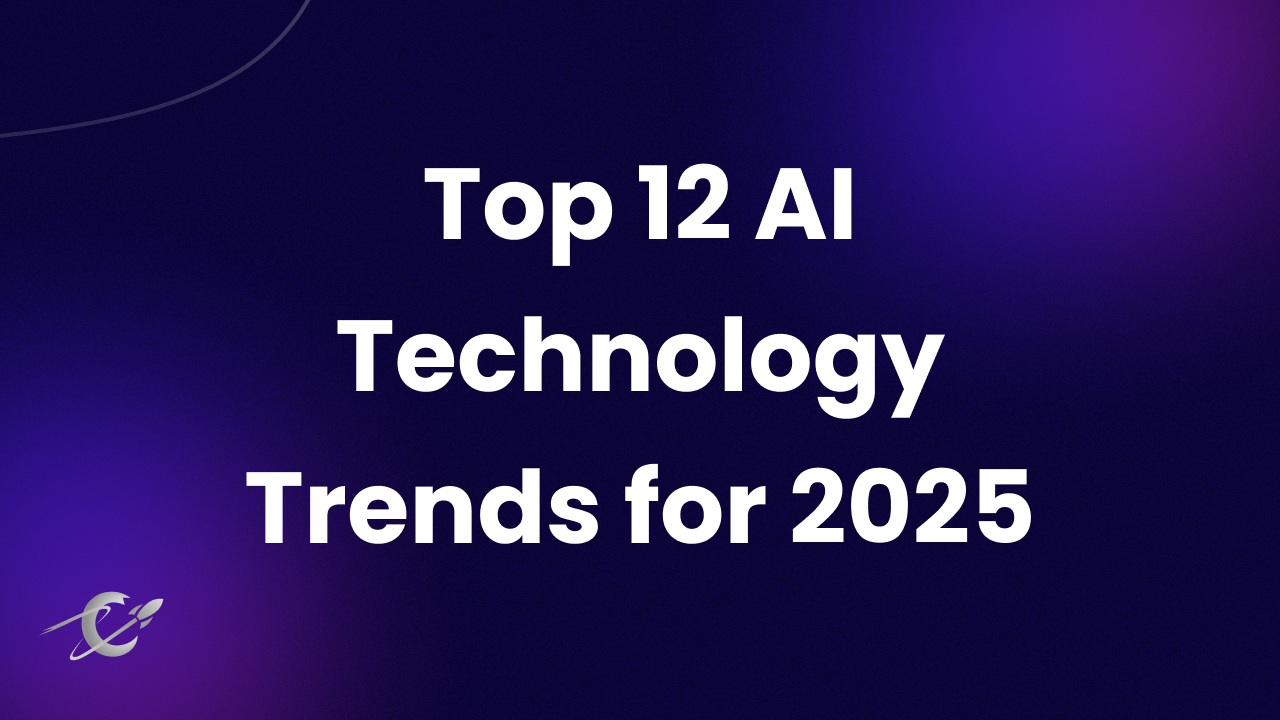


Wait, don't go! 100% Free - Unlimited Webflow Development for 7 days.
Only valid for-